HRT tablets
The original HRT. All the options, one pill
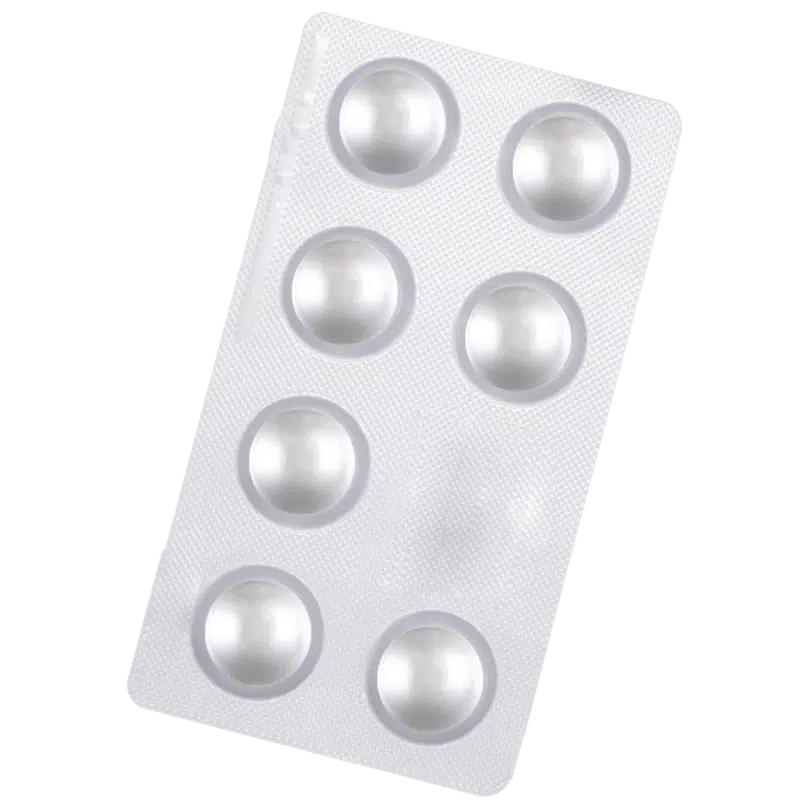

Secure delivery
UK clinicians
Tablets are the original and most extensive form of HRT option available. So if you’re not sure which type of HRT you’re after, you can’t go far wrong with them.
We understand how frustrating the menopause can be, which is why we offer effective treatments alongside expert advice when you order HRT tablets online with us.
HRT tablets are the original form of HRT and, as such, have the biggest range of options if you’re looking to manage your symptoms of menopause and help promote your long-term health. You usually take them once a day, and you can get them in oestrogen-only, combined, sequential and continuous forms, so you’re sure to find a tablet that’s right for you.
Tablets can be a good option for you if you’re looking for something familiar, especially if you’re already taking other tablets as part of your daily routine. You might also prefer to use them if you’ve got sensitive skin, and are concerned about irritating it with gels or patches.
Before we look at how HRT tablets treat the symptoms of the menopause, we first need to take a step back and look at what happens to your body during menopause more generally.
As you age, your periods naturally become more infrequent, until eventually you no longer have any more periods. When this happens, your body produces less of the hormone oestrogen. These reduced oestrogen levels in the body can cause many of the symptoms associated with menopause, such as hot flushes, night sweats, vaginal dryness and mood swings.
HRT tablets work to alleviate these symptoms by replacing the ‘deficit’ of hormones caused by the menopause. This has also been shown to help maintain your bone density and reduce the risk of osteoporosis.
HRT tablets come in a wide range of doses, so whether your menopause symptoms are only mild or particularly strong, you’ll be able to find one that works for you.
Ultra-low doses of oral HRT start from 0.5mg of estradiol (a synthetic form of oestrogen), going up to doses of 4mg for stronger symptoms. Generally, you’ll be advised to start on a low dose treatment at first, which can be increased if you’re still struggling with symptoms.

How we source info.
When we present you with stats, data, opinion or a consensus, we’ll tell you where this came from. And we’ll only present data as clinically reliable if it’s come from a reputable source, such as a state or government-funded health body, a peer-reviewed medical journal, or a recognised analytics or data body. Read more in our editorial policy.
When it comes to HRT tablets, you’ve got the most extensive range of options available to you. That’s because there are a few different ways to take HRT, depending on your individual health needs, and tablets cover all the bases. These are as follows:
Combined HRT. This is the most commonly used form of HRT. It contains synthetic versions of both oestrogen and progesterone, which work together to treat your symptoms and reduce your risk of complications. This is because taking oestrogen on its own can increase your risk of womb cancer, so you’ll need to take combined HRT unless you’ve had a hysterectomy.
Oestrogen-only HRT. This is exactly what it says on the tin. You should only use oestrogen-only HRT if you’ve had a hysterectomy, otherwise you’ll need to take a separate progestin.
Continuous HRT. This is where you’ll take consistent doses of hormones which don’t vary with your menstrual cycle. This form of HRT is best suited to women who are taking oestrogen-only therapy or for those who are postmenopausal.
Cyclical or sequential HRT. This is a form of HRT where you’ll take a varying dose of progesterone alongside oestrogen. It comes in monthly or three-monthly options, to induce a bleed according to this schedule. This form of HRT is only suitable for women who are still getting periods.
The best HRT tablet for you is the one that best suits your needs. So it’ll be dependent on what stage of the menopause you’re at (whether you’re still getting periods, and how often), whether or not you’ve had a hysterectomy, and how strong your symptoms are.
Your clinician will be able to advise you on the best HRT for you once you’ve talked to them about your health.
If you decide that tablets aren’t for you, there are still plenty of options open to you. Many women choose to use patches instead of tablets, for example. HRT patches are available in the same dosages and forms as tablets, except you only need to change them twice a week (instead of having to remember a daily tablet), and they’re less likely to cause indigestion or blood clots. They do tend to be a bit more expensive than tablets, though.
Another topical option is gels for HRT. These only come in oestrogen-only options, though. So you’ll need to take a progestin alongside this if you still have a womb. Other HRT options include an implant, which is a small pellet-like object that’s placed under your skin, and vaginal oestrogen, which treats vaginal symptoms of menopause like dryness, but doesn’t help with symptoms elsewhere in the body such as hot flushes or mood swings.

How we source info.
When we present you with stats, data, opinion or a consensus, we’ll tell you where this came from. And we’ll only present data as clinically reliable if it’s come from a reputable source, such as a state or government-funded health body, a peer-reviewed medical journal, or a recognised analytics or data body. Read more in our editorial policy.
HRT tablets are to be taken once a day – swallowed whole with water.
If you’re taking cyclical HRT there are two different ways of taking it:
You’ll take monthly HRT if you’re still getting regular periods, and 3-monthly HRT if your periods are irregular. You should only take continuous HRT if your last period was a year or more ago. This involves taking either oestrogen on its own or oestrogen and progestogen together every day without a break.
The only other form of HRT that you might be recommended to take alongside your HRT tablets is vaginal oestrogen. You might be prescribed this if your HRT tablets are working to help most of your menopause symptoms, but you’re still getting vaginal symptoms.
Because low-dose vaginal oestrogen doesn’t interact much with the rest of your body, it’s usually safe to take alongside other forms of HRT.
Another situation that might arise is if you want to use an oestrogen gel or patch, but haven’t had a hysterectomy. In this instance you should take a progestin in the form of a tablet alongside this, to minimise your risk of developing womb cancer.

How we source info.
When we present you with stats, data, opinion or a consensus, we’ll tell you where this came from. And we’ll only present data as clinically reliable if it’s come from a reputable source, such as a state or government-funded health body, a peer-reviewed medical journal, or a recognised analytics or data body. Read more in our editorial policy.
Have something specific you want to know? Search our info below, or ask our experts a question if you can’t find what you’re looking for.
HRT tablets do have the potential to cause side effects, but research shows that the benefits of HRT outweigh the risks to most women, either through side effects or other long-term concerns.
Some of the most commonly seen side effects of HRT tablets include:
For a more complete list of possible side effects, check the leaflet that comes with your treatment.
Yes, all forms of HRT (excluding certain kinds of vaginal oestrogen) require a prescription. This is because they’re not safe for everyone to take, so a clinician will need to ask you some questions before they can prescribe it to you. This is to make sure you’re getting the right kind of HRT for you.
Sort of. Gina is a vaginal tablet, rather than an oral one. This means it gets to work on the vaginal symptoms of menopause, such as vaginal dryness, but it won’t treat any symptoms elsewhere, like night sweats. Because Gina only works on local symptoms, it’s safe for you to take regardless of what stage of the menopause you’re at, as well as whether or not you’ve had a hysterectomy.
As a result of this, it was recently made the first form of HRT to be available without a prescription.
Getting the right menopause treatment for you shouldn’t have to be stressful. Talk to our expert clinicians about your health, and they’ll recommend the right treatments for you, tailored to your needs. Your treatment will be sent to you on a schedule that fits your lifestyle, in discreet packaging. No waiting around for a doctor's appointment, no lengthy trips to the pharmacy. Just fast and effective healthcare that works for you.
Featured Editorial Hormone replacement therapy and the prevention of postmenopausal osteoporosis. Menopausal Review, [online] 4, pp.213–220.
Types - Hormone replacement therapy (HRT). [online] NHS.
https://www.uhcw.nhs.uk/.
Hormone replacement therapy (HRT) - Risks. [online] nhs.uk.
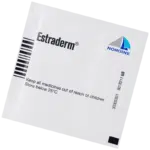
Oestrogen-only HRT patch. Change twice a week and reduce menopause symptoms up to 75%.

Combined continuous HRT patch. Used it's been more than 12 months since your last period.
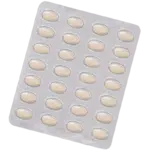
Combined continuous HRT pills, at a lower dose. Good if you're sensitive to hormones.
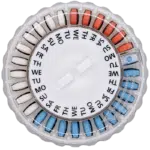
Combined treatment for menopause relief. Sequential pills for women who no longer have periods.
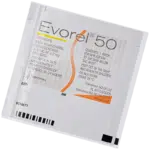
Sequential dose patch. Use to manage menopause symptoms if you still have periods.

Combined sequential HRT tablets. For treating menopause symptoms if you still have periods.

Oestrogen-only HRT patches and pills. For if you've had a hysterectomy, or used with progestins.

Combined HRT skin patch used by women who've had a year or more since their last period.

Oestrogen-only tablet that relieves menopausal symptoms. Often prescribed for women who have had a hysterectomy.

Like Elleste Duet, but continuous. Which makes it best suited to postmenopausal women.
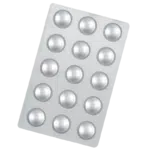
The natural progesterone treatment. Taken alongside oestrogen to relieve symptoms of menopause.
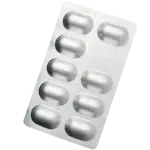
Progestogen-only tablet to help symptoms of menopause. To be taken alongside an oestrogen for a combined HRT.
Testosterone gel you can rub onto your skin. Helps with loss of libido.

Registered with GMC (No. 4624794)
Meet Daniel
Registered with GPhC (No. 2202465)
Meet Sanjeda
Registered with GPhC (No. 2070724)
Meet Craig
Always read the leaflet that comes with your medication and tell us about any side effects you get.
We know health, but you know you.
Our experts tell you what’s safe, but you decide what’s best.
Answer a few questions and tell us about yourself. Get tailored advice from our clinicians so you can choose better.
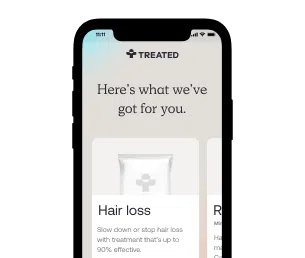
Choose your treatment and how often you have it delivered.
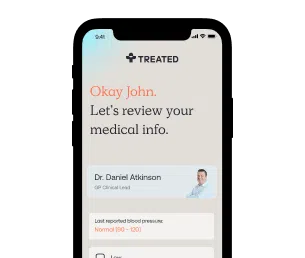
We know things change. It’s the nature of life. We’ll check in regularly to make sure your treatment is still right for you.
Pause. Change. Skip. Start again. Any time you like.
Here are some other things we can help with.
Choose from our range of tablets and solutions. Get ongoing care and support from our experts.
Stop smoking treatments that can help you kick the habit forever, and reduce your risk of disease.
Tablets or injections. Tailored weight loss treatments combined with ongoing support from our experts.
We're making healthcare more about you. Sign up to our newsletter for personalised health articles that make a difference.
Disclaimer: The information provided on this page is not a substitute for professional medical advice, diagnosis, or treatment. If you have any questions or concerns about your health, please talk to a doctor.
We couldn't find what you're looking for.
Here's everything we treat. Or, if you're looking for something we don't have yet, you can suggest something.
If there’s a particular treatment or condition you’re looking for, tell us and we’ll look into it for you.
Submit your question here, or tell us if you’ve found an issue on our site.
We’ll get back to you very soon. We aim to respond to all queries in one working day.
You’re signed up to our newsletter. Keep an eye on your inbox for our latest update.
By clicking 'Subscribe now' you're agreeing to our Privacy Policy.
We’ve sent you an email asking you to confirm your email address.